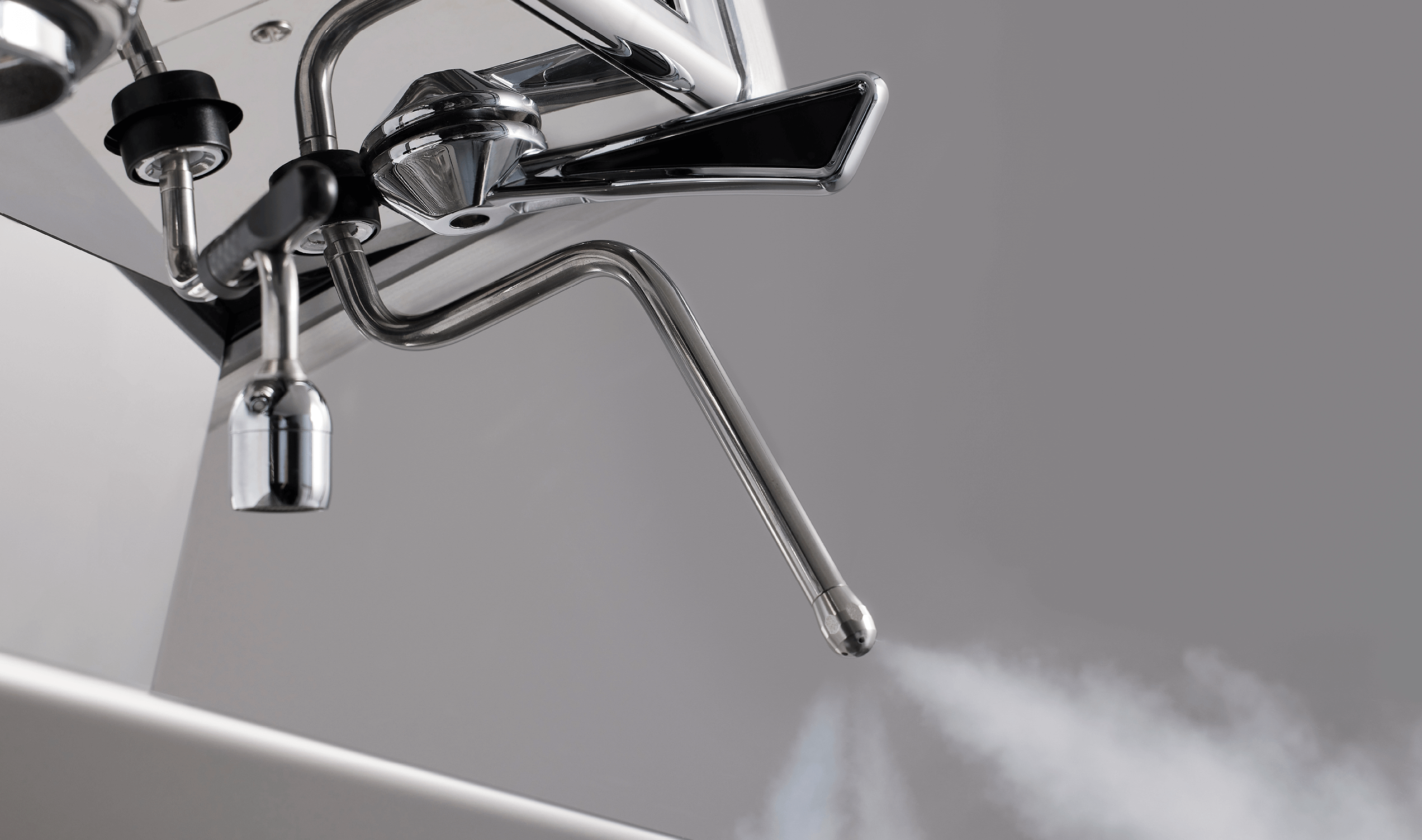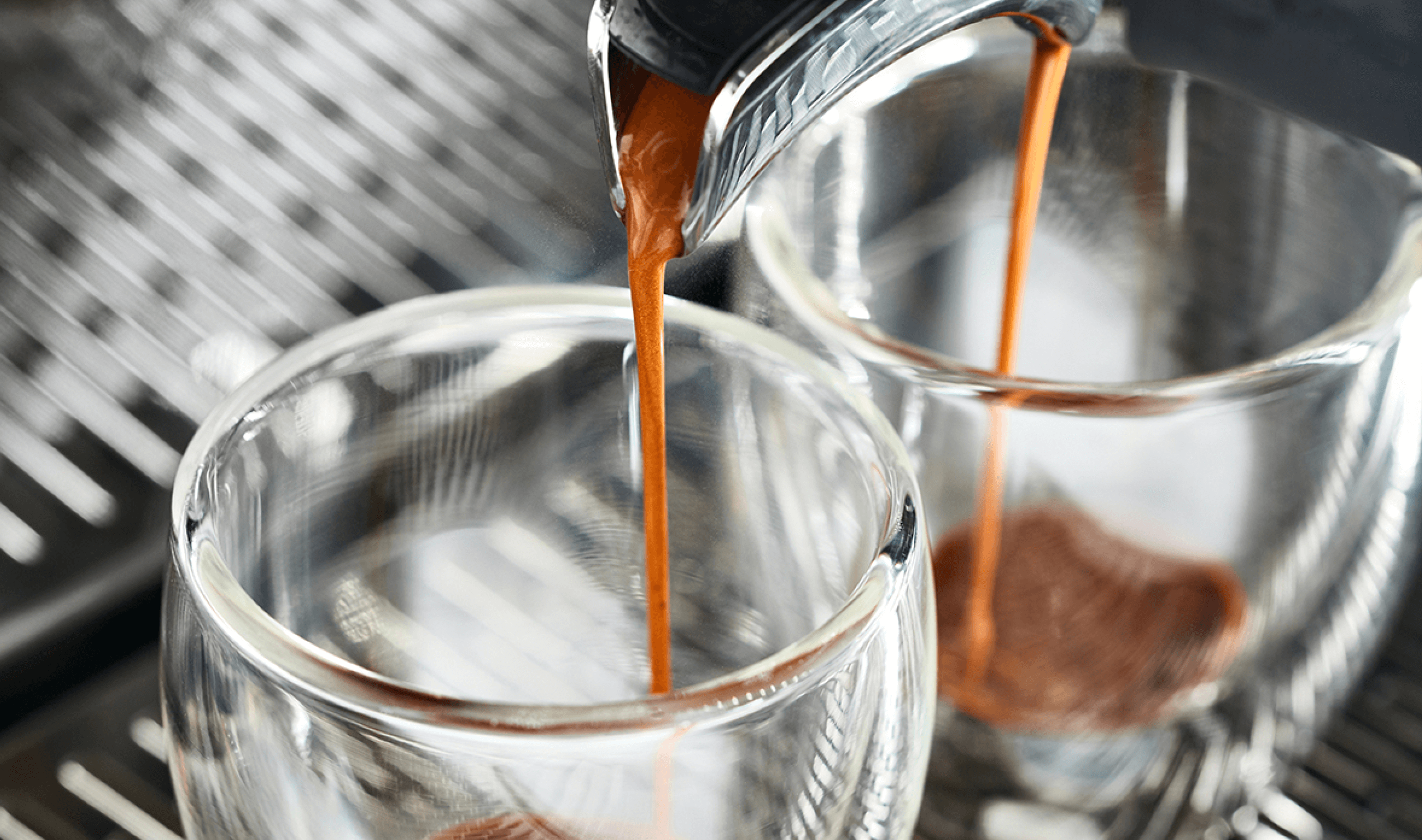Conscious coffee professionals rely on consistency, speed, and precision. Whether you’re running a high-traffic café or training new staff, knowing how to properly use an automatic (or traditional) commercial espresso machine is crucial. Unlike superautomatic machines that manage the entire brewing cycle, automatic models strike a balance between manual control and built-in automation—ideal for maintaining craftsmanship without compromising efficiency.
Traditional espresso machines offer full control over extraction, combining reliability, thermal stability, and automation features to support consistent performance in high-demand environments. With user-friendly programmability and durable construction, these machines are designed to meet the rigorous standards of espresso and other coffee and milk-based beverages.
Basic Components of an Espresso Machine
Understanding the machine’s key parts is essential before you begin brewing. While designs may vary slightly, most UNIC automatic commercial espresso machines share these core elements.
- Group Head: The part where the portafilter locks in. Hot water flows through the coffee group to brew espresso. UNIC’s Maestro brew group ensures stable shot temperature by mounting directly to the boiler.
- Portafilter: A handle with a metal filter basket that holds the ground coffee. UNIC’s patented DOSAMAT® system detects whether it’s a single or double cup and adjusts the dose accordingly.
- Steam Wand or STEAMAIR® Outlet: Used for steaming and frothing milk. The STEAMAIR® system delivers precise temperature-controlled foamed or heated milk, enhancing workflow and consistency.
- Hot Water Outlet: Provides instant access to hot water for preparing teas, americanos, or preheating cups. Its dedicated function helps streamline beverage service without interfering with espresso brewing.
- Control Panel: Houses programmable buttons for short and large, single or double shots —typically four programmable volume keys plus a semi-automatic key for manual control.
- Boiler System: PID-regulated temperature and coffee groups’ thermal inertia, combined with large boilers, ensure consistent quality shot after shot.
- Cup Warmer: Integrated tray on the top of the machine, offering large capacity and maintaining cups warm.
- Drip Tray: Collects excess water and coffee drips.
Familiarity with these parts improves workflow and helps identify any performance issues quickly.

Step-by-Step Guide to Pulling an Espresso Shot
Using an automatic commercial espresso machine requires precision and attention to detail. Here’s a step-by-step guide tailored to baristas and professional staff.
- Warm Up the Machine: Turn on the machine and allow 20–30 minutes for proper heating. This ensures stable temperature and pressure.
- Grind and Dose: Use a commercial-grade grinder to grind coffee beans. Dose 14–21g of ground coffee into the portafilter, depending on basket size. Make sure the grind size is correct : the finer you grind your coffee, the more flavour that is extracted into your water over the same period of time.
- Tamp Evenly: Apply firm, even pressure to compact the grounds. A consistent tamp is essential for uniform extraction.
- Purge the Group Head: Before inserting the portafilter, run a short burst of hot water to clear any residual coffee oils or grounds.
- Lock and Brew: Insert and secure the portafilter into the group head. Press the programmed button for a double shot. UNIC automatic machines utilize a volumetric command system to precisely control the flow, ensuring consistent volume and flavor for both single and double shots. The Easylock® system ensures smooth and secure locking of the portafilter into the group head, reducing strain for the barista and enhancing workflow ergonomics.
- Monitor Extraction: A well-pulled shot should take 25–30 seconds with a rich crema on top. Adjust grind size or dose if timing is off. Keep in mind the rule of 2:1 ratio for a double shot: as an example with 18 grams of ground coffee, you should extract 36 grams of espresso.
- Serve or Combine with Milk: Serve the espresso directly or use the steam wand to prepare milk. With Steamair®, you can ensure optimal texture and temperature control, delivering consistent milk foam for cappuccinos, lattes, or any milk-based specialty drink—without manual steaming effort.
Always control the result in the cup to readjust if necessary the time of extraction, the temperature, the grind size.

Common Mistakes to Avoid
To get the best results every time, avoid these frequent errors.
- Neglecting Water Quality: Too hard water can damage components, too soft water can alter the taste. Install a water softener to manage water hardness, and replace the cartridge when it’s needed.
- Using Stale Coffee: Always use freshly roasted beans and grind immediately before brewing. Do not leave coffee beans in the grinder hopper if they’re not going to be used, they are open to the air and stale quickly.
- Skipping Pre-Infusion: Some UNIC machines feature pre-infusion cycles. Skipping this step can affect flavor extraction. It is worth to note that pre-infusion helps reducing any channeling issue.
- Improper Tamping: Uneven or too soft tamping can lead to channeling and weak espresso.
- Overfilling the Basket: This can cause leakage around the portafilter and bitter flavors. It could also cause some channeling issues.
Cleaning After Use: What You Need to Do Daily
Routine cleaning keeps your espresso machine functioning optimally and ensures every cup meets quality standards. Here’s what to clean at the end of each day.
- Backflush the Group Head: Insert a blind filter and run the backflush cycle with an approved detergent. UNIC automatic (traditional) models include an automatic cleaning program for convenience.
- Clean the shower screen, and brush the brew group weekly.
- Clean the Portafilters: Remove the basket, soak in hot water and detergent, then rinse thoroughly.
- Wipe the Steam Wand or STEAMAIR Outlet: After each use, purge and wipe the wand with a damp cloth. At the end of the service, soak the wand or STEAMAIR outlet in a solution to remove milk residue.
- Clean the Drip Tray: Rinse and clean thoroughly to prevent buildup.
- Wipe Exterior Surfaces: Use a non-abrasive cloth to clean the body of the machine and control panel.
- Check for Wear: Inspect gaskets and baskets weekly – to spot any signs of damage or wear. Check for any malfunctions, such as leaks.
With proper use and care, UNIC automatic commercial espresso machines deliver the reliability, consistency, and performance demanded by today’s coffee professionals. Backed by technologies like EASYLOCK®, STEAMAIR®, and the thermally stable Maestro brew group, UNIC traditional machines offer exceptional value, durability, and ease of use—even during peak service hours.